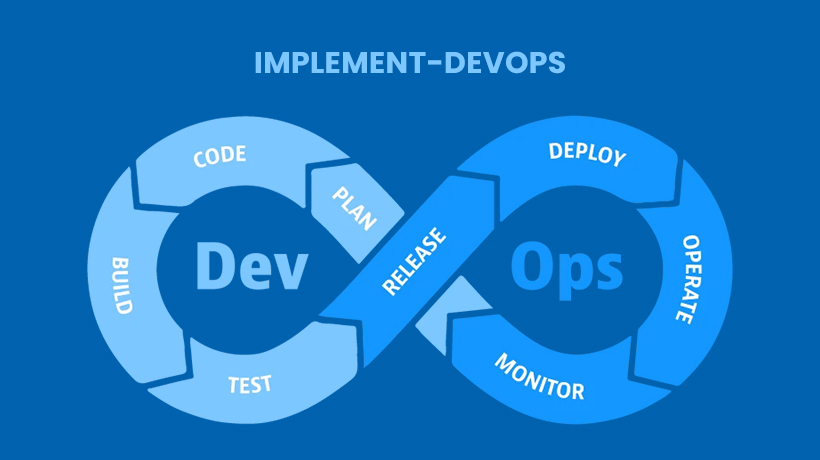The inclination of accessing the internet using smartphones and iOS devices has scrambled organizations and industries to shift towards a contemporary software development approach called DevOps. As a matter of fact, most of them have moved beyond comprehending the significance and impact of DevOps from the business perspective and on to how they can implement it. The increasing adoption of this agile, software-driven practice clearly demonstrates its potential as an effective explanatory process to:
- Unify software operation and mobile app development teams;
- Set a more stable and reliable environment for easy deployments;
- Build faster, scalable, and high-quality websites, apps, and software;
- Deliver services and apps at high velocity, and;
- Achieve scale & agility and increase efficiency & productivity.
In this article, we will be breaking down the best practices for successful DevOps implementation in the mobile app development landscape.
What is DevOps and How Is It Beneficial?
Most businesses think of DevOps as a mobile/website app development, architecture, or platform. But it can be seen as a paradigm shift that has completely changed the way teams collaborate and function. This approach generally focuses on improving collaboration practices, shipping advanced features quickly while making services more stable and consistent over the long term, shorting the time to market, preserving security compliance, and so on.
Within the context of project planning and development, preparatory to the emergence of DevOps, designing and managing applications and software were essentially two sides of the same coin. The end goal was to succeed with software and application deployments without any security breaches and service impairments. Once the code was written by the developer, it was passed on to the operation staff that remained in charge of running and maintaining that product in production. However, this approach represented an apparent overlap between the two departments due to different goals, focus areas, and incentives. DevOps acted out as a key enabler to bring the operation staff, project managers, and developers of software and mobile app development on the same page while aligning with the organization’s business objectives.
Step #1: Evaluate the objective to implement DevOps practice
Before adopting continuous DevOps workflow in your organization, it’s vital to understand your IT goals and identify all the potential bottlenecks and current challenges that transpire during end-to-end development, deployment, and delivery. While a growing need for implementation of this strategy is generally driven by a combination of software development determinants, such as frequent releases, production defects, and painful deployments, the same also helps in addressing the continuous changing needs of organizational structure, technologies, culture, and even staff habits. Additionally, DevOps is hitting an all-time high adoption rate as it has the ultimate potential to not only handle various disruptions in the market dynamics but also facilitate marketing excellence at different levels efficiently. For this reason, it’s crucial that you define all whys and wherefores to get started with DevOps and then identify the business value that it will create.
Step #2: Crack the Organizational Silos and Encourage Collaboration
At the root of an unsuccessful, botched project is the lack of communication, tragic conflict of different responsibilities as well as end goals, and old-style soiled thinking inside companies. While competing initiatives and synergistic opportunities in a workspace are necessary to gather actionable insights and optimize your operations and marketing strategies, they can cause severe production breaks when a task requires collective approach rather than individual effort.
DevOps has made a significant stride in encouraging both development members and operation staff to step out of their silos and unite as a group to resolve the user’s problems, improve CI/CD, and enhance the customer experience. By combining development, operations, and quality assurance elements in a single package, DevOps allows multiple groups to collaborate within an ethos of communal responsibility. This practice enables the teams to improve their decision-making capabilities, discover as well as fix various challenges and errors, and deliver flawless products to end-users and other businesses. Remember, end-user satisfaction is a significant factor in the potential impact of your final mobile app development product.
Step #3: Don’t Just Jump-Start, Instead, Start Small and Then Scale Up
Many enterprises today presume that making a specific change in their organization or workflow will automatically drive the successful journey of scaling up and agile development. Unfortunately, that’s not the case. Implementing agile at scale requires you to drive modifications at different levels, which technically won’t happen overnight, or even within a few months. A core principle is to start with small but high-impact prototypes and then scale up steadily. Instead of performing and releasing a one-shot cycle, put your philosophy into action, design a small configuration, bring together your team, and address the constraints encountered along with the potential solutions.
Step #4: Select Tools that are Compatible with Each Other
Empowering groups with a shared tools strategy is an ideal approach to enable them to join forces across development, testing, and deployment processes and improve the business value of your mobile app development project. There’s a wide range of DevOps tools available in the market that deliver clear visibility and greater control over the entire process. The common tools strategy should be a combination of:
- Processes
- Communications and collaboration planning
- Continuous development tools & integration tools
- Continuous testing tools
- Continuous deployment tools
- Continuous operations and CloudOps tools

